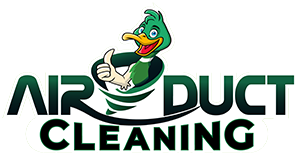Understanding the importance of clean air in childcare facilities is crucial for the health and well-being of children. As a leading provider of air duct cleaning services, we at (832) 777-5400, are committed to ensuring the highest standards of air quality in these environments. Clean air is not just about comfort, it’s about safeguarding the health of our most vulnerable population – our children. In childcare facilities, where children spend a significant amount of their time, the quality of air can have a direct impact on their health, development, and overall well-being. From reducing the risk of asthma and allergies to preventing the spread of airborne diseases, clean air plays a pivotal role. Our specialized air duct cleaning and disinfection services are designed to eliminate dust, mold, and other harmful pollutants that can compromise the air quality in childcare facilities. With our advanced techniques and high-quality products, we ensure that the air children breathe is safe and clean. So, let’s delve deeper into the importance of clean air in childcare facilities and how our top-rated services can help achieve it.
Understanding the Impact of Air Quality on Children’s Health in Childcare Facilities
The quality of air in childcare facilities is a critical factor that directly impacts the health and well-being of children. It is essential to understand that children are more susceptible to the harmful effects of poor air quality due to their developing respiratory systems and higher breathing rates compared to adults.
A study by the World Health Organization (WHO) revealed that over 90% of the world’s children breathe toxic air every day, which significantly contributes to the deaths of 600,000 children under the age of 15 annually. This alarming statistic underscores the importance of maintaining clean air in environments where children spend a significant amount of time, such as childcare facilities.
Poor air quality in childcare facilities can be attributed to various sources, including dust, mold, volatile organic compounds (VOCs) from cleaning products, and outdoor pollution seeping indoors. These pollutants can cause or exacerbate health issues in children, such as asthma, allergies, respiratory infections, and even cognitive development problems.
The American Lung Association states that "Poor indoor air quality can cause or contribute to the development of infections, lung cancer, and chronic lung diseases such as asthma." This statement emphasizes the need for regular and thorough cleaning of air ducts in childcare facilities.
Air duct cleaning is a vital service that helps improve indoor air quality by removing dust, mold, and other pollutants from the HVAC system. Regular cleaning of air ducts ensures that the air circulating in the facility is clean and safe for children to breathe.
However, it’s not just about cleaning the air ducts. Childcare facilities must also consider other factors such as proper ventilation, use of low-VOC products, and regular maintenance of HVAC systems to ensure optimal indoor air quality.
Identifying when air ducts need cleaning is also crucial. Signs such as visible mold growth, dust and debris blowing out of the vents, and unexplained health issues among children could indicate that the air ducts need to be cleaned.
In conclusion, the impact of air quality on children’s health in childcare facilities cannot be overstated. It is a matter of public health and safety that requires the attention and action of not only facility managers but also parents and policymakers. By ensuring clean air in childcare facilities, we can protect our children’s health and secure their future.
- World Health Organization (WHO). (2018). More than 90% of the world’s children breathe toxic air every day. https://www.who.int/news/item/29-10-2018-more-than-90-of-the-world-s-children-breathe-toxic-air-every-day
- American Lung Association. (n.d.). Indoor Air Pollutants and Health. https://www.lung.org/clean-air/at-home/indoor-air-pollutants
Implementing Effective Strategies for Maintaining Clean Air in Childcare Environments
The quality of air in childcare facilities is of paramount importance. It directly influences the health, well-being, and overall development of children. Therefore, it is essential to implement effective strategies to maintain clean air in these environments.
One of the most effective strategies is regular and thorough cleaning of air ducts. Air ducts can harbor dust, allergens, and other pollutants that can adversely affect air quality. Regular cleaning of these ducts can significantly improve the air quality in childcare facilities. For a comprehensive understanding of the process, you can visit how air duct cleaning works.
Another strategy is to ensure proper ventilation. Ventilation helps to circulate and refresh the indoor air, reducing the concentration of pollutants. This can be achieved by opening windows and doors to allow fresh air in, using exhaust fans, and installing air purifiers.
The use of low-emitting materials is also a viable strategy. Many building materials and furnishings release pollutants into the air. By choosing materials that are low-emitting, you can reduce the level of pollutants in the air.
Regular maintenance of HVAC systems is also crucial. HVAC systems can collect and distribute pollutants throughout the facility if not properly maintained. Regular maintenance includes cleaning and replacing filters as needed. For more information on the importance of this, you can visit how important is air duct cleaning.
Monitoring indoor air quality is another effective strategy. Regular monitoring can help identify any issues early, allowing for timely intervention. This can be done using various tools and devices that measure factors like humidity, temperature, and levels of certain pollutants.
Educating staff and parents about the importance of clean air and how to maintain it is also essential. This can be done through workshops, seminars, and informational materials.
Lastly, adopting a no-smoking policy in and around the childcare facility can significantly improve air quality. Secondhand smoke is a major indoor air pollutant and poses serious health risks to children.
In conclusion, maintaining clean air in childcare facilities is a multifaceted task that requires a combination of strategies. These include regular cleaning of air ducts, proper ventilation, use of low-emitting materials, regular maintenance of HVAC systems, monitoring of indoor air quality, education, and a no-smoking policy. By implementing these strategies, childcare facilities can provide a healthier and safer environment for children. For more detailed information on air duct cleaning, you can visit what is air duct cleaning.
In conclusion, the importance of clean air in childcare facilities cannot be overstated. It plays a pivotal role in ensuring the health, well-being, and overall development of children. By implementing effective air purification systems and maintaining good indoor air quality, childcare facilities can provide a safe, healthy, and conducive environment for children to learn, play, and grow. It is a collective responsibility of parents, caregivers, and facility administrators to prioritize this aspect of childcare. After all, our children deserve the best start in life, and clean air is a fundamental part of that.





